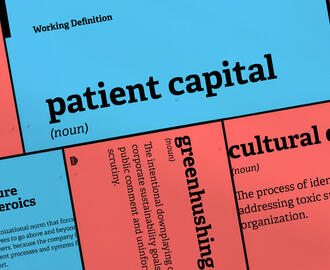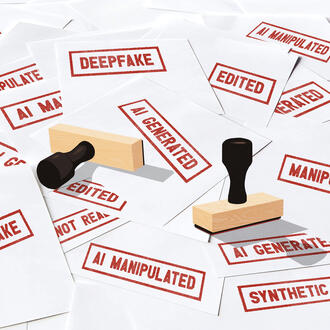Credit: pashabo / Shutterstock
2020 has brought highs and lows for the communication ecosystem created by social media — what MIT Sloan professorcalls the “Hype Machine.” People used digital social networks to stay connected with friends and loved ones during a pandemic, while at the same time misinformation and disinformation about COVID-19 spread through the same websites. Some businesses used social media to connect with customers quarantined at home; others joined a boycott of Facebook to protest the way the company handles hate speech. And with a presidential election approaching, campaigns reached voters through the Hype Machine amid concerns about how foreign actors use the networks to sway election results. Social media holds potential for both promise and peril and we’re at the crossroads.
In his new book “The Hype Machine: How Social Media Disrupts Our Elections, Our Economy, and Our Health — And How We Must Adapt,” excerpted below, Aral, director of the MIT Initiative on the Digital Economy, lays out the path to achieve the promise of social media. This includes understanding the forces at play and the science behind the Hype Machine, and what social media companies, policymakers, and users need to do to achieve the promise and avoid the peril of this new social order.
+++
Every minute of every day, our planet now pulses with trillions of digital social signals, bombarding us with streams of status updates, news stories, tweets, pokes, posts, referrals, advertisements, notifications, shares, check-ins, and ratings from peers in our social networks, news media, advertisers, and the crowd. These signals are delivered to our always-on mobile devices through platforms like Facebook, Snapchat, Instagram, YouTube, and Twitter, and they are routed through the human social network by algorithms designed to optimize our connections, accelerate our interactions, and maximize our engagement with tailored streams of content. But at the same time, these signals are much more transformative — they are hypersocializing our society, scaling mass persuasion, and creating a tyranny of trends. They do this by injecting the influence of our peers into our daily decisions, curating population-scale behavior change, and enforcing an attention economy. I call this trifecta of hypersocialization, personalized mass persuasion, and the tyranny of trends the New Social Age.
In 2013, a false tweet briefly wiped out almost $140 billion in U.S. stock market value.
The striking thing about the New Social Age is that fifteen years ago this cacophony of digital social signals didn’t even exist. Fifteen short years ago, all we had to facilitate our digital connections was the phone, the fax machine, and email. Today, as more and more new social technologies come online, we know less and less about how they are changing us. Why does fake news spread so much faster than the truth online? How did one false tweet wipe out $140 billion in stock market value in minutes? How did Facebook change the 2012 presidential election by tweaking one algorithm? Did Russian social media manipulation flip the 2016 U.S. presidential election? When joggers in Venice, Italy, post their runs to social media, do joggers in Venice, California, run faster? These questions contemplate the disruptive power of social media. By answering them, we can better understand how the Hype Machine impacts our world.
The Hype Machine has created a radical interdependence among us, shaping our thoughts, opinions, and behaviors. This interdependence is enabled by digital networks, like Facebook and Twitter, and guided by machine intelligence, like newsfeed and friend-suggestion algorithms. Together they are remaking the evolution of the human social network and the flow of information through it. These digital networks expose the controls of the Hype Machine to nation-states, businesses, and individuals eager to steer the global conversation toward their ends, to mold public opinion, and ultimately to change what we do. The design of this machine, and how we use it, are reshaping our organizations and our lives. And the Hype Machine is even more relevant today than it was before the COVID-19 pandemic pushed the world onto social media en masse.
By now we’ve all heard the cacophony of naysayers declaring that the sky is falling as new social technologies disrupt our democracies, our economies, and our public health. We’ve seen an explosion of fake news, hate speech, market-destroying false tweets, genocidal violence against minority groups, resurgent disease outbreaks, foreign interventions in democratic elections, and dramatic breaches of privacy. Scandal after scandal has rocked social media giants like Facebook, Twitter, and Instagram in what seems like a backlash from which they can never recover.
But when the social media revolution began, the world’s social platforms had an idealistic vision of connecting our world. They planned to give everyone free access to the information, knowledge, and resources they needed to experience intellectual freedom, social and economic opportunity, better health, job mobility, and meaningful social connections. They were going to fight oppression, loneliness, inequality, poverty, and disease. Today, they’ve seemingly exacerbated the very ills they set out to alleviate.
One thing I’ve learned, from twenty years researching and working with social media, is that these technologies hold the potential for exceptional promise and tremendous peril — and neither the promise nor the peril is guaranteed. Social media could deliver an incredible wave of productivity, innovation, social welfare, democratization, equality, health, positivity, unity, and progress. At the same time, it can and, if left unchecked, will deliver death blows to our democracies, our economies, and our public health. Today we are at a crossroads of these realities.
The argument of “The Hype Machine: How Social Media Disrupts Our Elections, Our Economy, and Our Health” is that we can achieve the promise of social media while avoiding the peril. To do so, we must step out of our tendency to armchair-theorize about how social media affects us and develop a rigorous scientific understanding of how it works. By looking under the hood at how the Hype Machine operates and employing science to decipher its impact, we can collectively steer this ship away from the impending rocks and into calmer waters.
Unfortunately, our understanding and our progress have been impeded by the hype surrounding the Hype Machine. We’ve been overwhelmed by a tidal wave of books, documentaries, and studies of one-off events designed for media attention but lacking rigor and generalizability. The hype is not helpful because it clouds our vision of what we actually know (and don’t know) from the scientific evidence on how social media affects us.
While our discourse has been shrouded in sensational hysteria, the three primary stakeholders at the center of the controversy—the platforms, the politicians, and the people—have all been pointing their fingers at each other. Social media platforms blame our ills on a lack of regulation. Governments blame the platforms for turning a blind eye to the weaponization of their technology. And the people blame their governments and the platforms for inaction. But the truth is, we’ve all been asleep at the switch. In the end, each of us must take responsibility for the part we are playing in the Hype Machine’s current direction.
Not only are we all partly to blame, but we are all partly responsible for what happens next. As Mark Zuckerberg himself has noted, governments will need to adopt sensible, well-informed regulations. The platforms will need to change their policies and their design. And for the sake of ourselves and our children, we will all need to be more responsible in how we use social media in our digital town square. There is no silver bullet for the mess we find ourselves in, but there are solutions.
Achieving the promise of the New Social Age, while avoiding its peril, will require all of us—social media executives, lawmakers, and ordinary citizens—to think carefully about how we approach our new social order. As a society, we will need to utilize the four levers available to us: the money (or financial incentives) created by their business models, the code that governs social platforms, the norms we develop in using these systems, and the laws we write to regulate their market failures. Along the way, we will need to design scientific solutions that balance privacy, free speech, misinformation, innovation, and democracy. This is, no doubt, a monumental responsibility. But considering the overwhelming influence the Hype Machine has on our lives, it is a responsibly we cannot abdicate.
Excerpted from the book THE HYPE MACHINE: How Social Media Disrupts Our Elections, Our Economy, and Our Health—and How We Must Adapt by Sinan Aral. Copyright © 2020 by Sinan Aral. Published by Currency, an imprint of Random House, a division of Penguin Random House LLC. All Rights Reserved.



